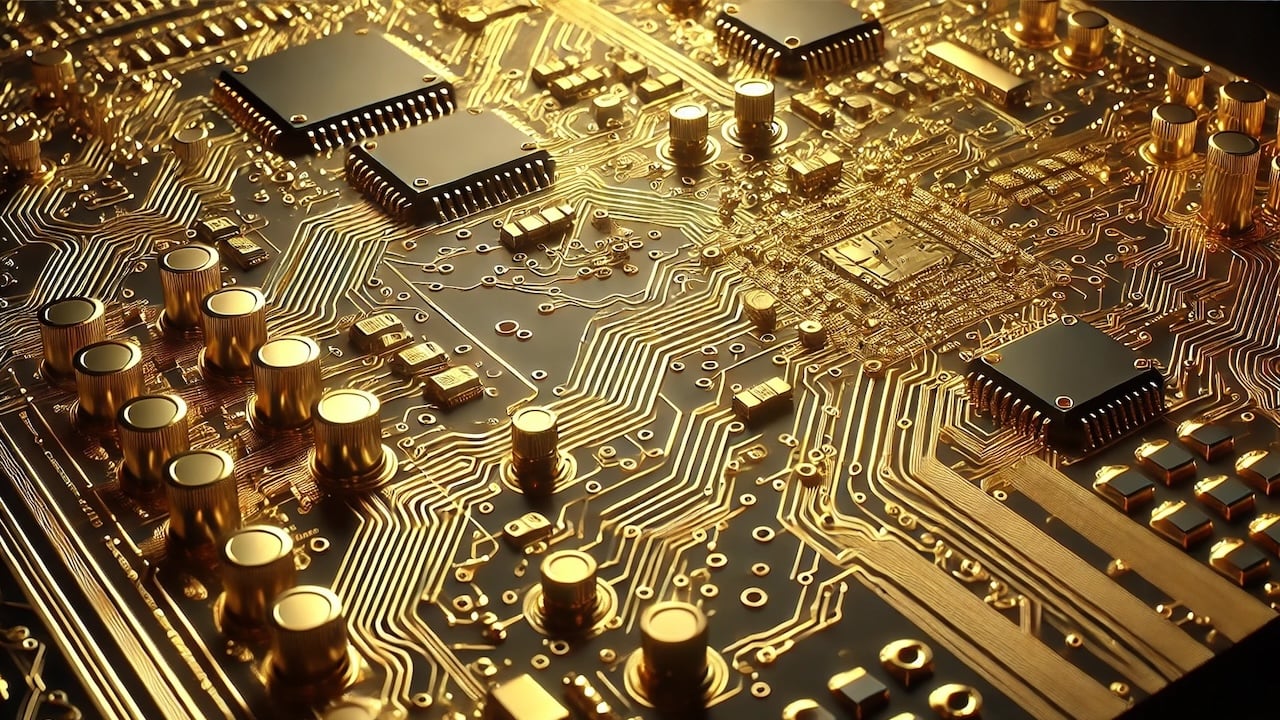(Mike Maharrey, Money Metals News Service) Industrial and tech demand for gold continued to rebound in the second quarter. Technology and industrial applications consumed 81 tons of gold in Q2, according to data compiled by the World Gold Council, an 11 percent year-on-year increase.
The strong second quarter boosted H1 tech and industrial gold demand to 162 tons.
The electronics sector was the primary driver of gold demand in the tech sector, with offtake increasing by 14 percent in Q2 to 68 tons. This was primarily a function of demand for high-end chips used in growing applications including AI and high-performance computing. There was also a modest increase in demand for consumer electronics during the quarter.
According to the World Gold Council, on an aggregate level, all major electronics fabrication hubs around the world recorded a y/y increase in gold demand in Q2.
- Japan 19t (+27%)
- South Korea 7t (+34%)
- US 17t (+4%)
- China 20t (+14%)
Gold used in the production of light-emitting diodes (LEDs) charted modest growth in Q2. Growth in this sector was boosted by the production of flat panel screens for the Olympic Games. However, there are other areas of demand for LEDs, including air and water purification, food preservation, automotive applications, charging station infrastructure, and robotics.
Gold demand for use in printed circuit boards (PCBs) was up in Q2, driven by growing shipments of high-end PCBs. containing higher concentrations of gold. There was also robust demand for PCBs used in server and satellite applications.
Gold is also used in the production of memory chips and the wireless sector.
According to the WGC, demand for gold in the electronics sector will likely remain strong in the third quarter. The World Semiconductor Trade Statistics Group anticipates a robust 18 months; it is forecasting 16 percent growth across the semiconductor market in 2024.
SK Hynix and Micron, two of the world’s largest memory chip manufacturers, have reported that their 2024 stock of high-end memory chips is already sold, with much of 2025’s production also reserved. Samsung is forecasting its Q2 revenue to rise by 23 percent, thanks to ‘skyrocketing’ AI chip demand.
Demand for gold in other industrial applications came in at 11 tons in Q2. That was unchanged year-on-year. Indian offtake fell due to the country’s elections. There were also fewer weddings, causing a drop in demand for gold thread used in saris. This was offset by the growing demand for gold-plated jewelry in China.
Gold Is a Useless Metal?
Warren Buffett once said, “Gold gets dug out of the ground in Africa, or someplace. Then we melt it down, dig another hole, bury it again, and pay people to stand around guarding it. It has no utility. Anyone watching from Mars would be scratching their head.”
You’ll often hear this notion that gold is “useless” from commentators on mainstream financial networks.
As you can see by the growing demand for gold in technology and electronics, this is just silly.
In fact, gold is one of the most useful metals in the world. Due to its utility coupled with its scarcity gold is also one of the most valuable metals in the world.
In the first place, gold is beautiful. That’s why people all over the world love to wear gold. About three-quarters of gold demand is for jewelry production. About 479.4 tons of gold were used in jewelry fabrication in the second quarter alone.
But gold isn’t just pretty. Gold’s inherent physical and chemical properties make it useful in many industrial and technological applications. Gold doesn’t corrode, it is an exceptional electricity conductor, it is malleable, and gold can be used to catalyze many chemical processes without being consumed.
This is why we see gold increasingly used in the tech sector. In fact, gold would probably be used even more if it weren’t so rare and expensive.
Gold is also important in the medical field. Its inherent stability and unique optical properties make it perfect for use in diagnostic testing. The World Gold Council said that gold is “at the heart of the hundreds of millions of Rapid Diagnostic Tests (RDTs) that are used globally every year.
“This well-established, and critically important, technology has changed the face of disease diagnosis in the developing world over the last decade.”
Gold nanoparticles are used in testing for malaria, HIV, hepatitis, and other illnesses.
Gold has even been used in some exotic applications. In 2018, a team of Chinese researchers partially restored the sight of blind mice by replacing their deteriorated photoreceptors – sensory structures inside the eye that respond to light – with nano-wires made of gold and titanium.
The point is gold is far from useless.
But fundamentally, gold is money. And everybody wants to have money – especially real money.
Mike Maharrey is a journalist and market analyst for MoneyMetals.com with over a decade of experience in precious metals. He holds a BS in accounting from the University of Kentucky and a BA in journalism from the University of South Florida.

